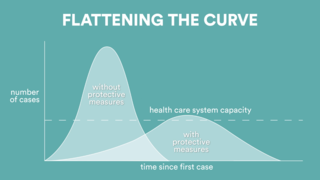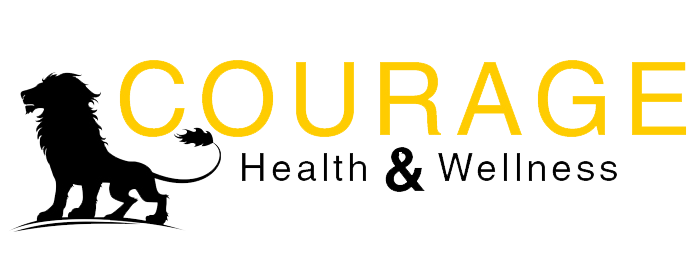SCIENTIFIC INSPIRATION FROM “FLATTEN THE CURVE”

By: couragehw
Categories:
SCIENTIFIC INSPIRATION FROM “FLATTEN THE CURVE”
MARCH 31, 2020
What does “flatten the curve” teach us about how to improve psychology?
By: Alexander Danvers Ph.D.
Posted Mar 29, 2020

This is an intuitive and informative graphic–that comes from an abstract mathematical model!Source: Image by Carl Bergstrom and Esther Kim.
The flatten the curve figure is based on the Susceptible-Infected-Recovered (SIR) model (or variations of that model). The SIR model is a set of mathematical equations that are meant to capture how people interacting in a population change from being susceptible (healthy, not yet infected), to infected, to recovered (healthy again, and now immune). This is abstract stuff, and equations are not the language most psychologists are used to when talking about their research.
Psychologists tend to use statistics. These summarize observations that the psychologists made. What was the average change in depression symptoms for people who went to therapy versus didn’t? Is this change big enough that we should consider it reliable—meaning the therapy will decrease depression overall when it’s given to a lot of people?
We don’t typically think in terms of models—generalizing from a set of observations to a more abstract predictive equation. Here are some advantages to a model-based approach that I am observing in reading good epidemiology—but that are still areas of opportunity for psychology:
1. Effectively presenting “What If?” Information. In the “flatten the curve” image, there are distinct predictions made about the effects of two different actions—doing nothing versus social distancing. Beyond that, there have been lots of articles with interactive sliders and other tools that allow you to see how changing an assumption (how deadly the virus is) immediately changes outcomes. The model-based approach makes predictions about what happens under many different conditions.
In psychology, we don’t often present expected results of different actions. Typically, you’ll just see a difference between two actions (or experimental conditions) presented as being zero or not zero (significant). If we haven’t tried out a condition in an experiment, we don’t necessarily have a prediction (or the prediction is vague—see the next point).
2. Giving a specific number as an output. In many of the articles I’ve read, there is a prediction of a specific number of people who will get infected—and who will not—as a result of COVID-19. There can be a lot of uncertainty around the specific number; I read one article suggesting a death count between 330 and 1.5 million people. But the point is that the specific number being predicted is an important part of the model.
Following the point above, in psychology we don’t often make predictions in terms of specific numbers. Our predictions tend to be more focused around “this will be more than that”—as in “having the depression treatment will lead to fewer depression symptoms than not having it.” We don’t typically say things like “you’re likely to reduce your depression score by about a half (*made up proportion*) using Cognitive Behavioral Therapy. In a lot of cases that would be really helpful to know.
3. Focusing our minds on key indicators. If you read a lot of articles about the science of COVID-19, you realize that it’s important to know how infectious the disease is. Estimating this number allows you to get a much better handle on what to expect for the future, and so you realize that new, more accurate information about the transmission rate of the disease is particularly important.
In psychology, there’s a sense that any interesting experiment or measurement is valuable—but there is not often a sense that we need to conduct critical experiments or collect critical measurements. If a researcher is developing a treatment for depression, certainly they’d want to test whether it’s better than not getting treatment (or getting the current standard care), but there’s not the sense that we need to get precise measures of sleep quality or responses to negative events. These might be nice to have, but we don’t develop models that depend on the precise values of indicators of important processes.

Psychology researchers should think more often in terms of processes changing over time.Source: Photo by Hernan Pauccara from Pexels
4. Focusing on patterns of change over time. The spread of disease is understood as a process. One person interacts with another, maybe touching and spreading the disease, and this leads to a change in the number of people infected. Over time, this process repeats frequently, and the way that this occurs in time—how often people interact, how long it takes people to recover—are key to understanding the disease’s spread. At its core, the disease spread models are dynamic models—they capture rates of change in processes over time
Psychology needs to take change over time more seriously. For example, we should consider the way moods fluctuate over time when treating depression, and rates at which treatments kick in. In recent research, I have argued that we should consider personality in terms of specific states that we are drawn towards. We can then consider not just what someone’s typical level of extraversion is, but how quickly a person returns to that personal baseline (or equilibrium) point, after daily life pushes them into another state.
Overall, I believe that dynamic systems is going to be one of the most important emerging perspectives in social and personality psychology in the next decade. It’s already made a substantial impact on cognitive psychology, and its ideas are beginning to be explored in greater depth in other domains. Understanding psychology means understanding patterns of change—in mental states, in relationships, in cultural practices, in habits. Building this in to theory is important.
Being quarantined has been stressful, but it has also given me more time to read and think. Reflecting on the inspiring work of people who are at the front lines of helping combat the epidemic has inspired me to consider the way I can improve my own work. I hope that it helps remind you of how useful science can be, and that it inspires other scientists to consider the ways they can best improve their work.
